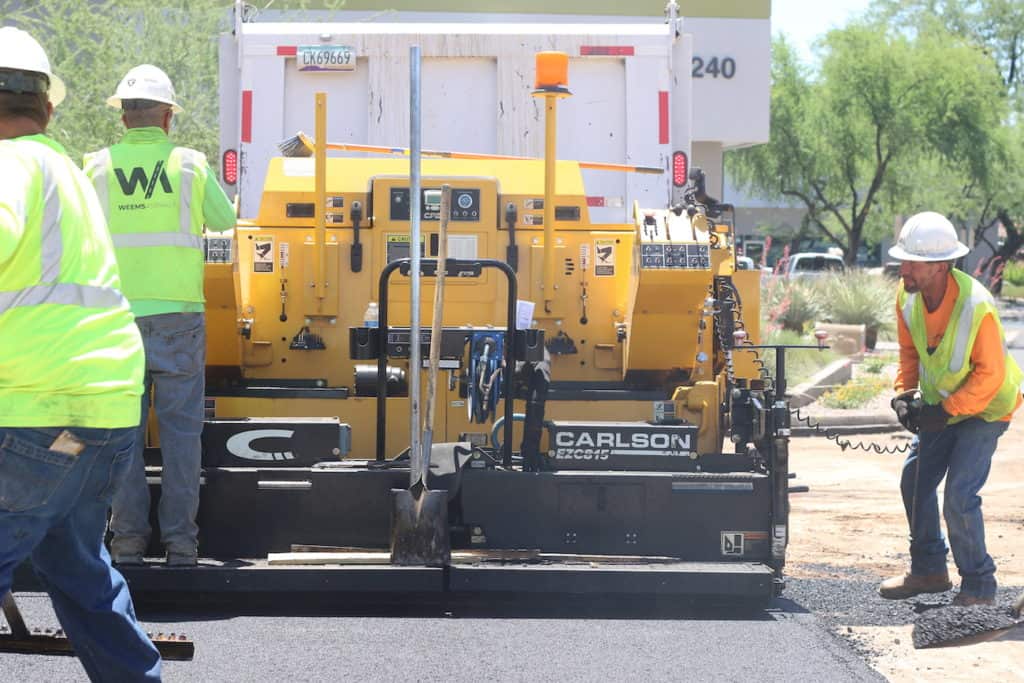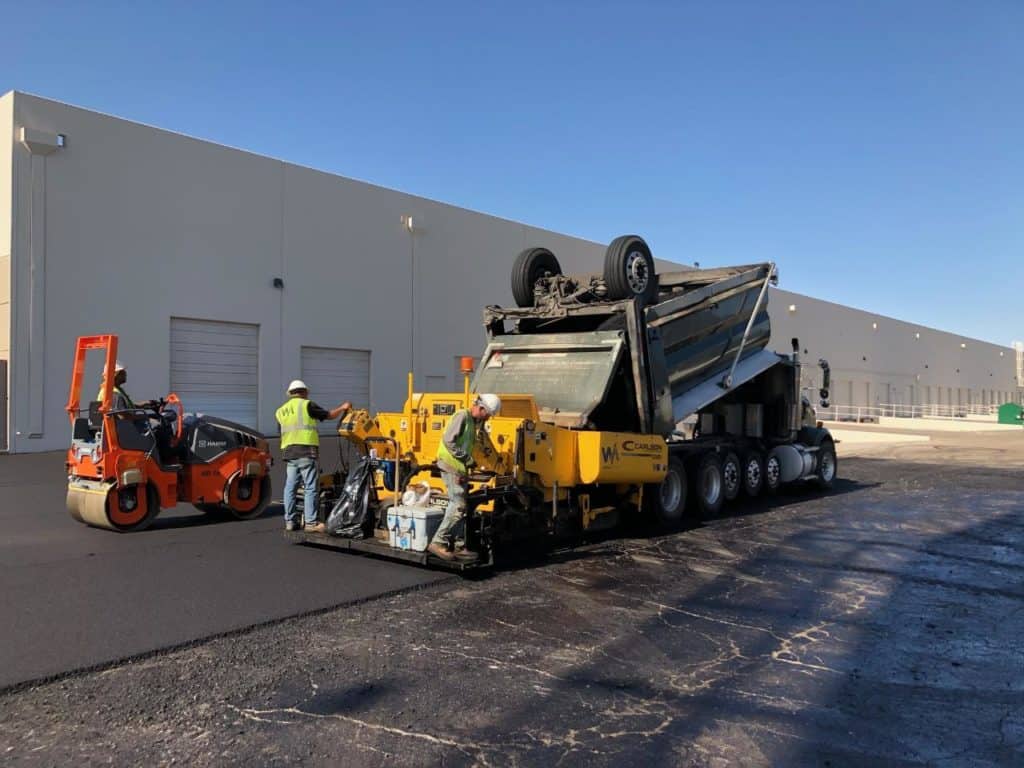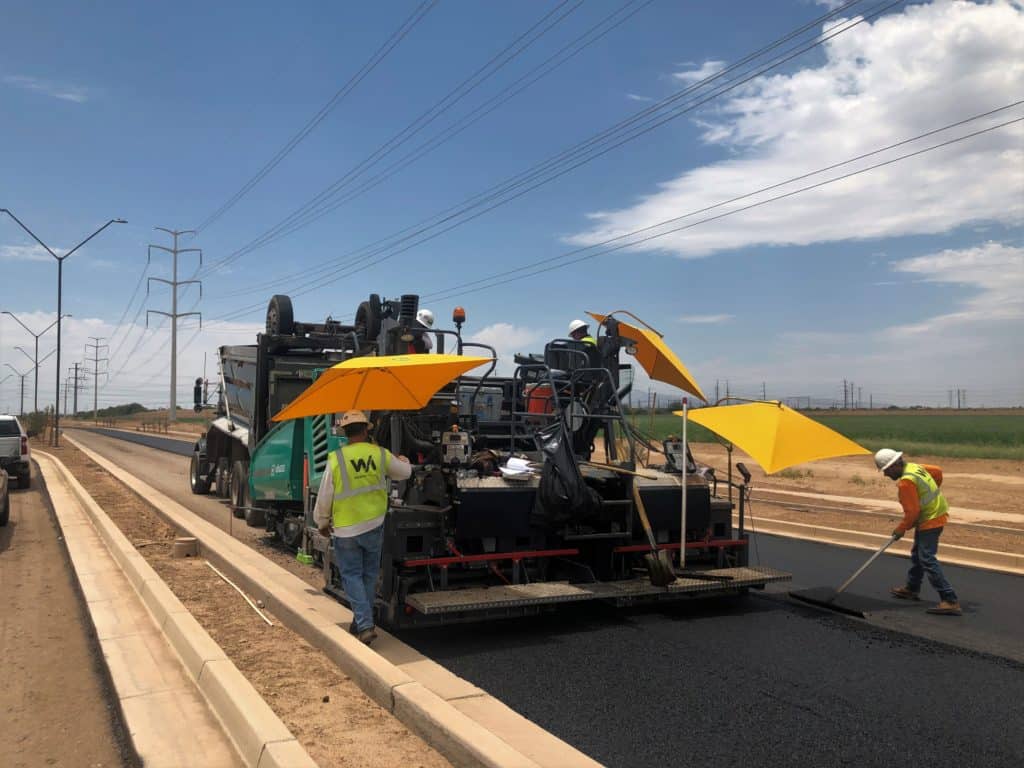ASPHALT PAVING
Asphalt concrete or hot mix asphalt is made up of specified crushed rock and sand (Mineral Aggregates), asphalt liquid binder and cement or lime (Mineral Filler). It is vital to the life of your pavement that the quality of the material and the workmanship is not compromised. It is also important that the subbase has been installed properly, as this will give your new asphalt a great foundation to construct your pavement on. Successful paving projects require preparation and attention to details, well before your pavement is installed.


Overlays are a great way to extend the life of your asphalt parking lot or road. We recommend that you consider all the necessary factors before choosing an overlay for your property.
ASPHALT OVERLAY //
The surface preparation for an overlay project is dependent on the condition, type and elevation of the existing pavement. The existing pavement should be structurally sound, level, clean and capable of bonding to the overlay. To meet these requirements, the existing pavement is usually repaired, leveled, cleaned and then coated with a bituminous tack coat. The following are factors to consider when determining if an asphalt overlay is the right solution for your project:

Project Size
For projects that are small, the work required prior to performing an overlay may be greater than the overall cost. This can result in removal and replacement being a more cost-effective option.

Elevations
The existing elevations must be evaluated to ensure proper drainage. Asphalt surfaces with grades less than two percent will make the project much more challenging to achieve the desired drainage.

Cracking
Existing cracks will eventually reflect the new asphalt surface. The amount of time it will take for this to occur is dependent on many variables.
Paving On Grade
When your asphalt has reached its life span or when the repairs to perform an overlay are not enough to save your pavement, it’s time to remove your asphalt and replace it with new. Once the asphalt has been removed, the subbase is inspected to ensure proper drainage and a strong foundation for the new asphalt to be placed on. This process may require excavating unsuitable materials and replacing them with a specified aggregate base course (ABC) or similar product, graded and rolled to optimum compaction. Addressing the grade is paramount to the life of your asphalt pavement. Now it’s time to install fresh asphalt. The thickness of the asphalt is usually installed anywhere from two to four inches in depth, depending on the type of traffic your property will encounter. Now that you have a new asphalt surface, make sure you give it the proper maintenance to last for decades.

Pulverize, Grade & Pave
Asphalt pulverizing is the process of grinding up the existing asphalt surface and blending with a portion of the subbase layer leaving all the existing materials in place. Depending on the elevations and fixed points at your property, some materials may be hauled away. Pulverizing is a money-saving method because it does not require new base materials. In addition, pulverizing eliminates the need to haul materials off-site. Once the grade is installed to the correct elevations and optimum compaction has been achieved, the paving process begins.
